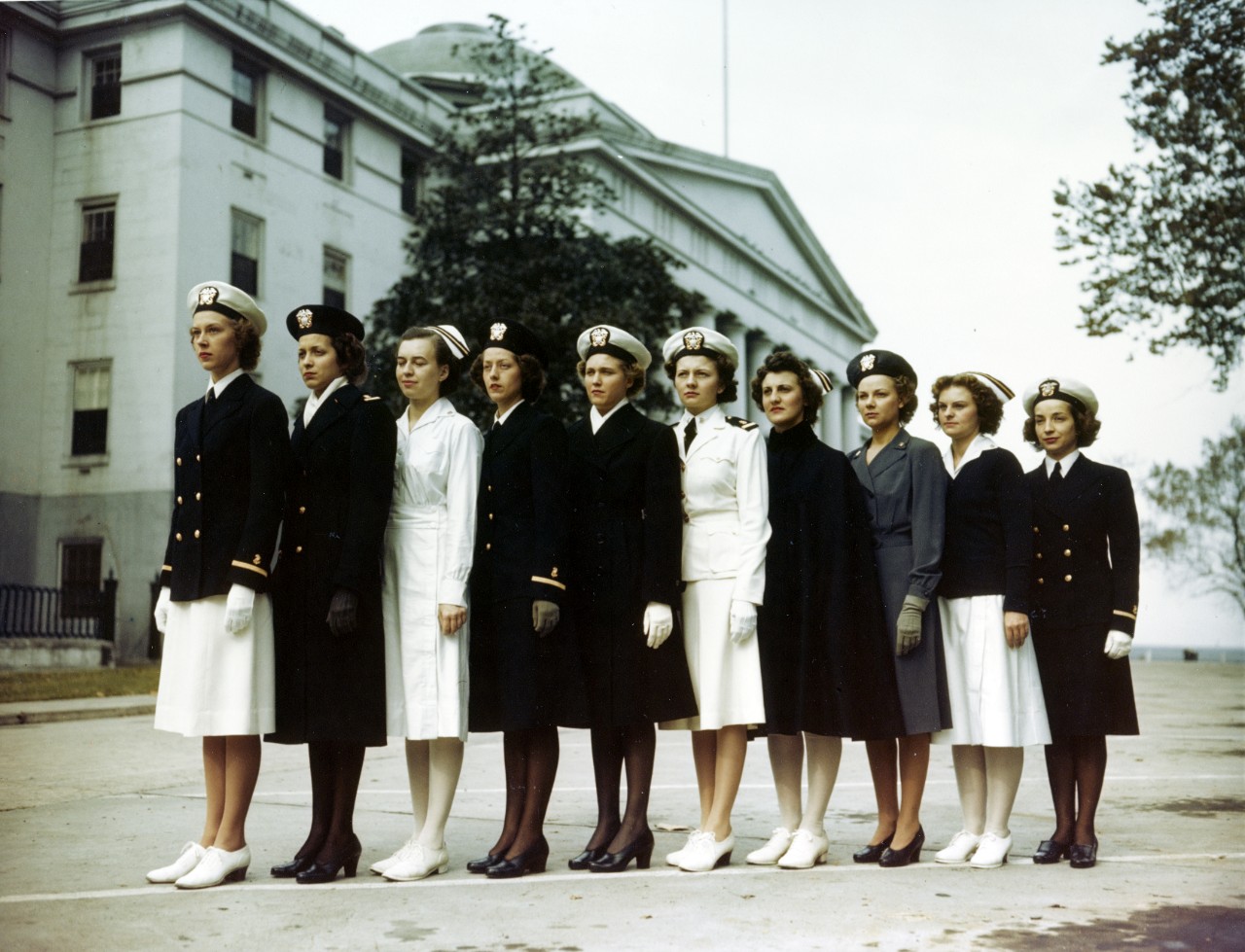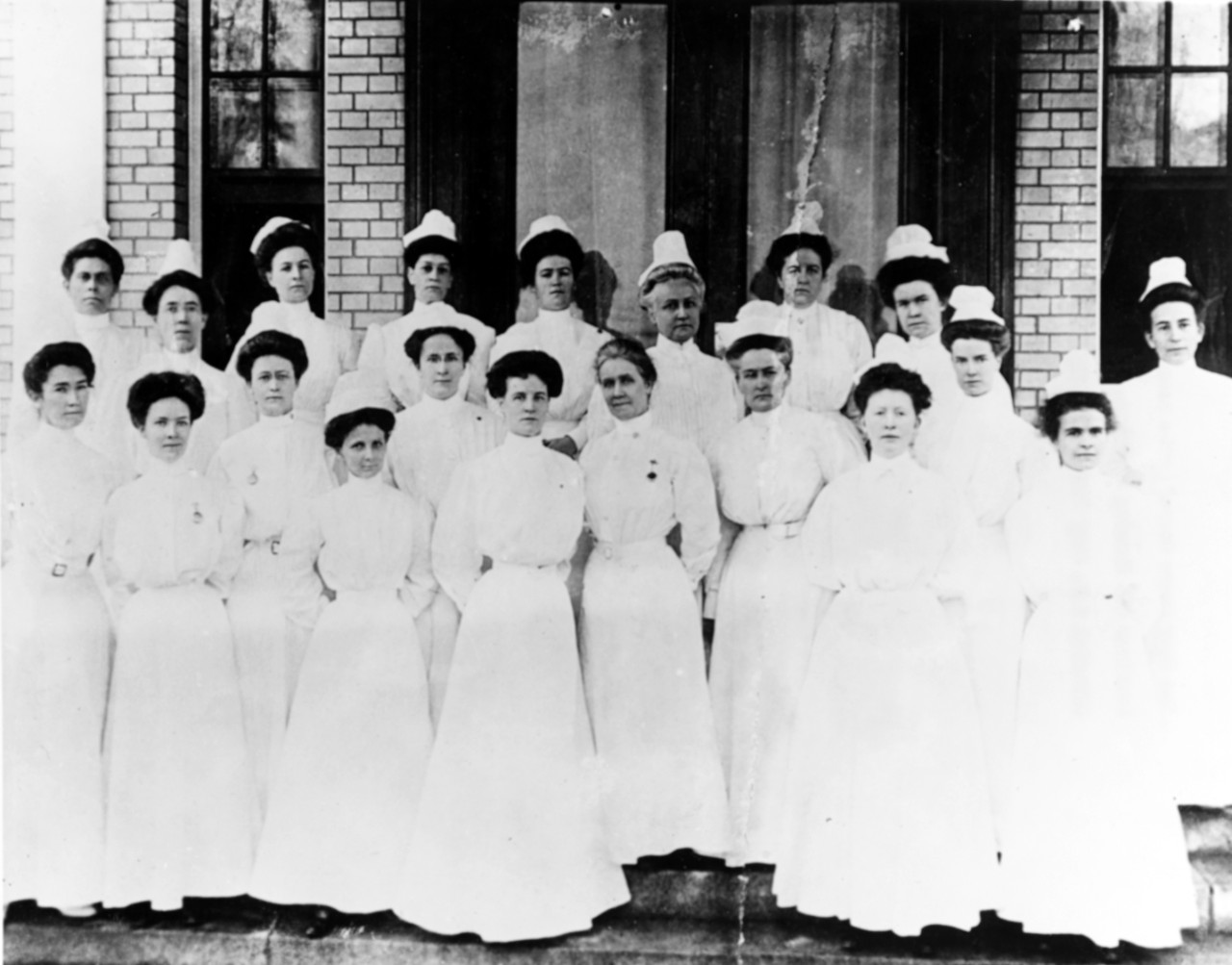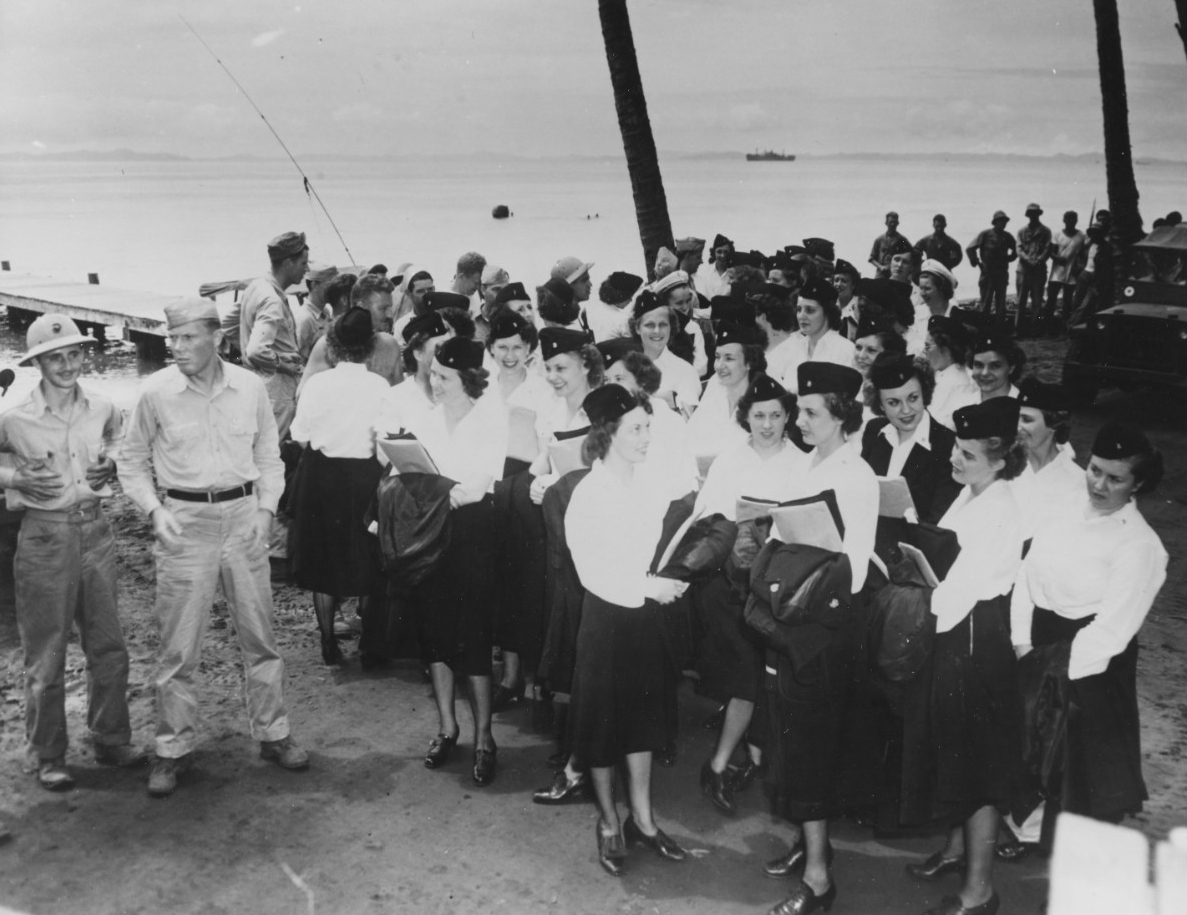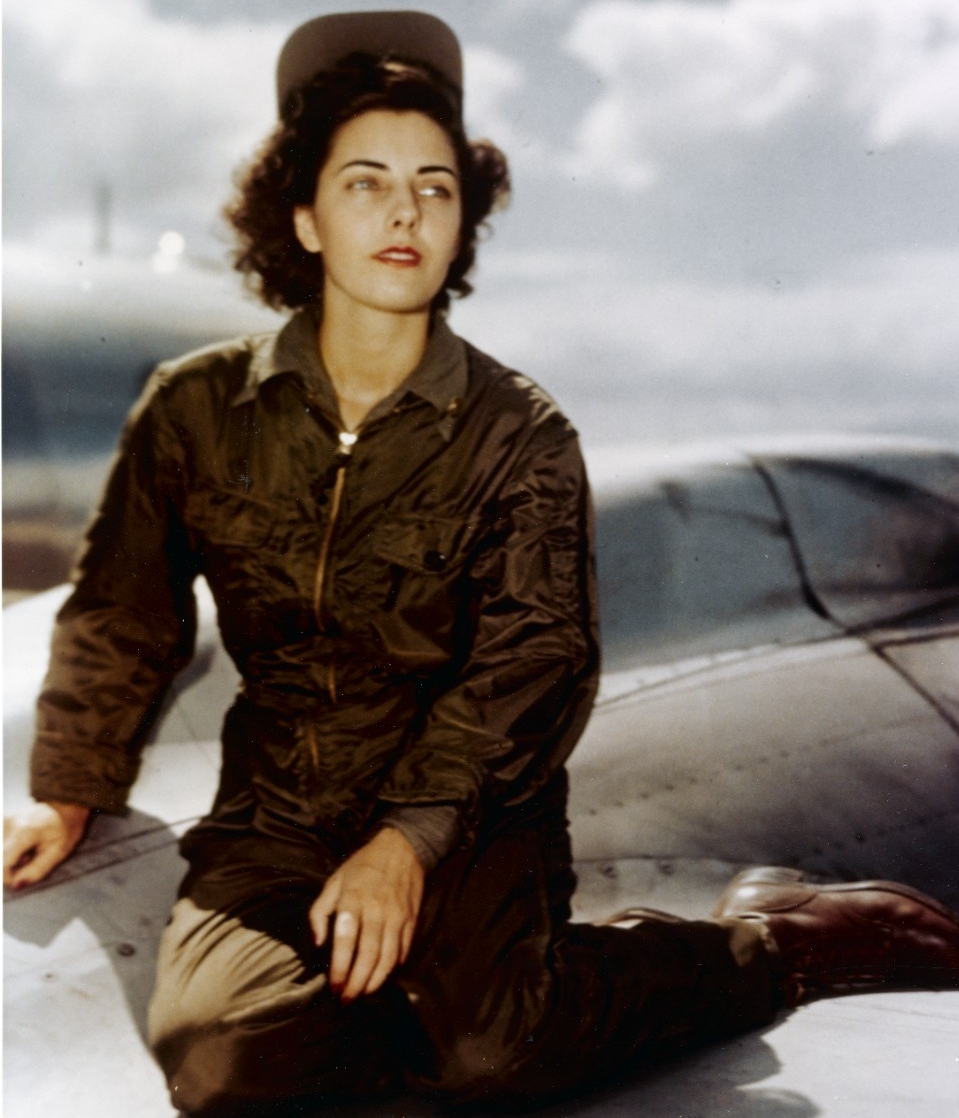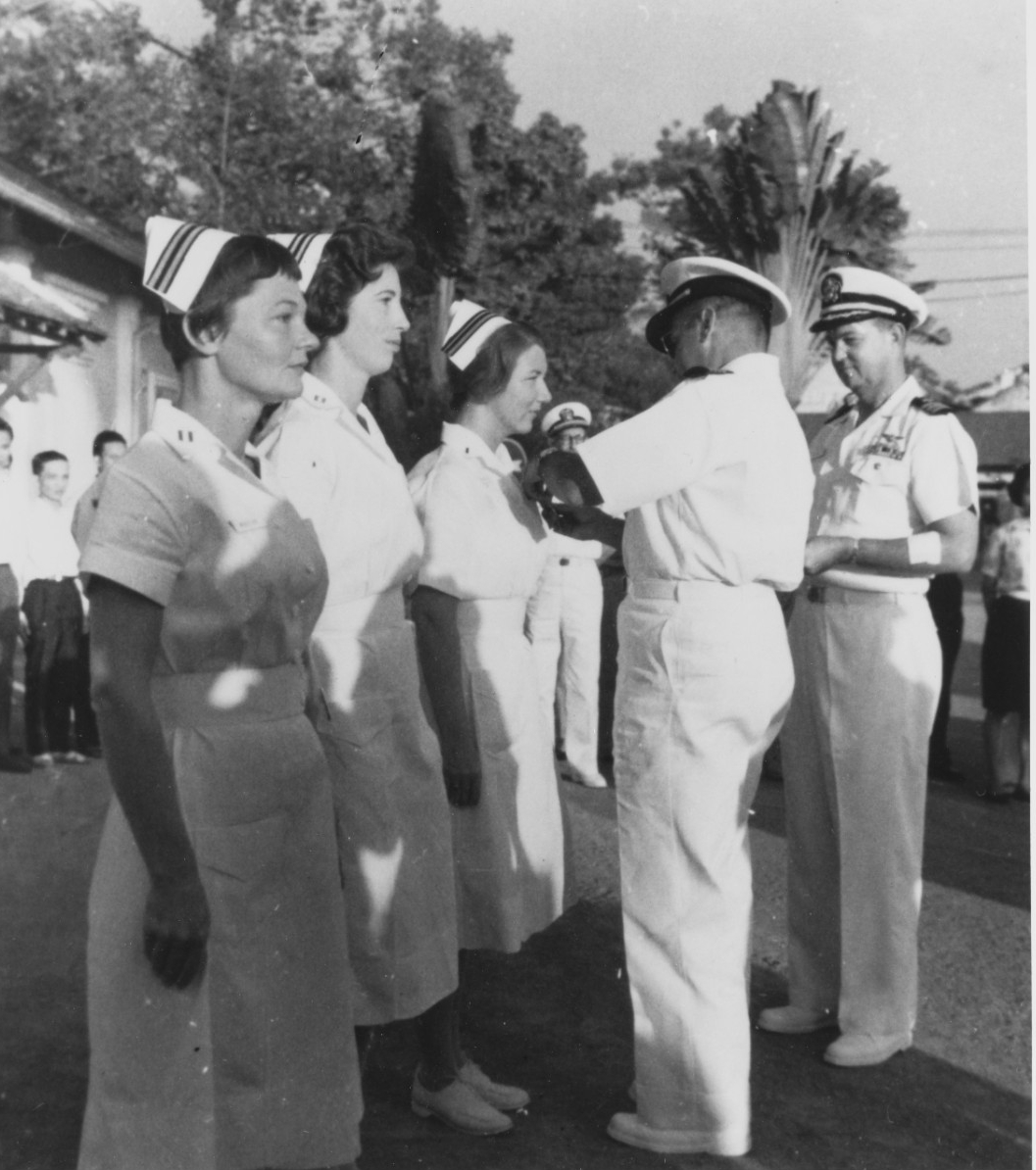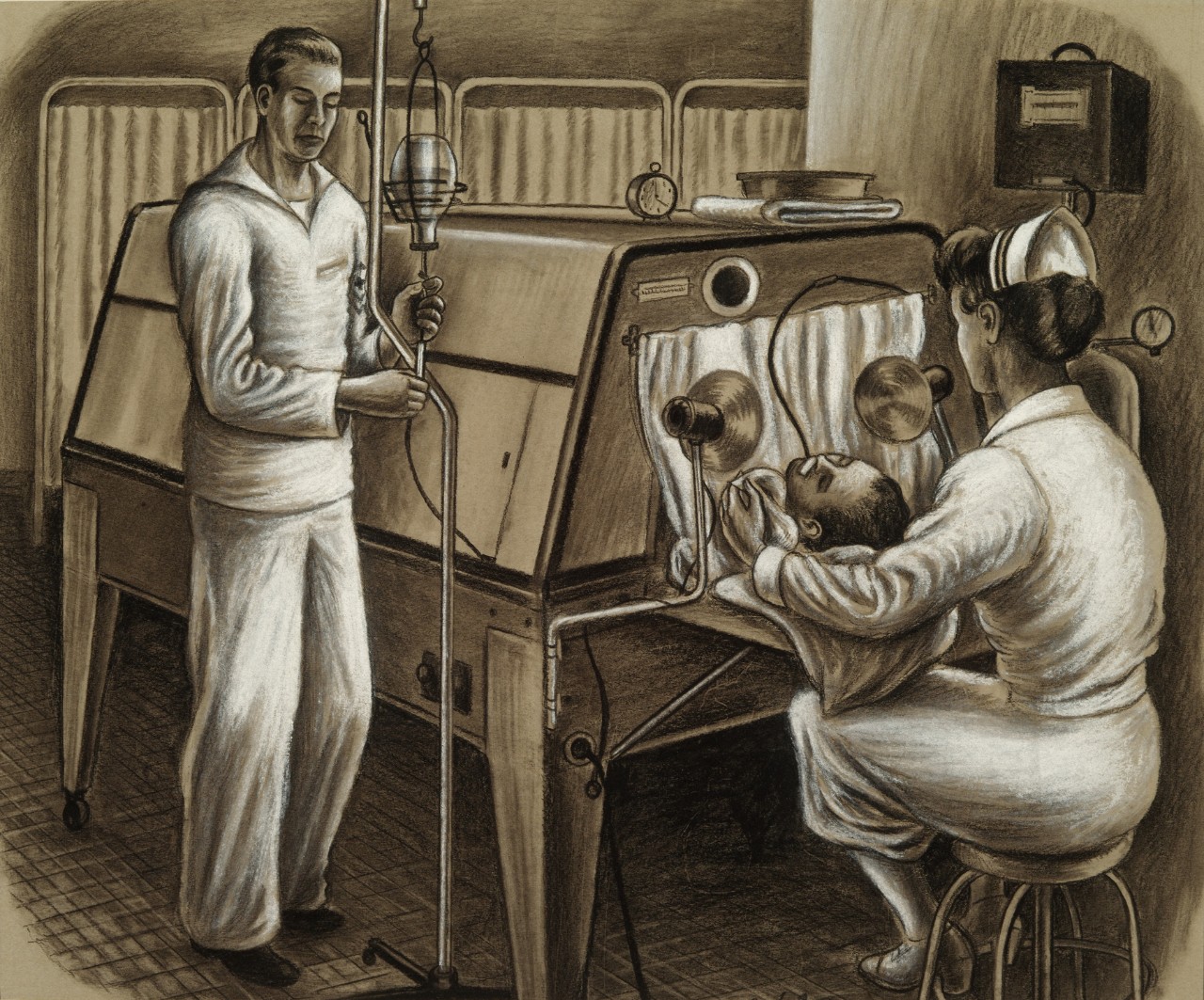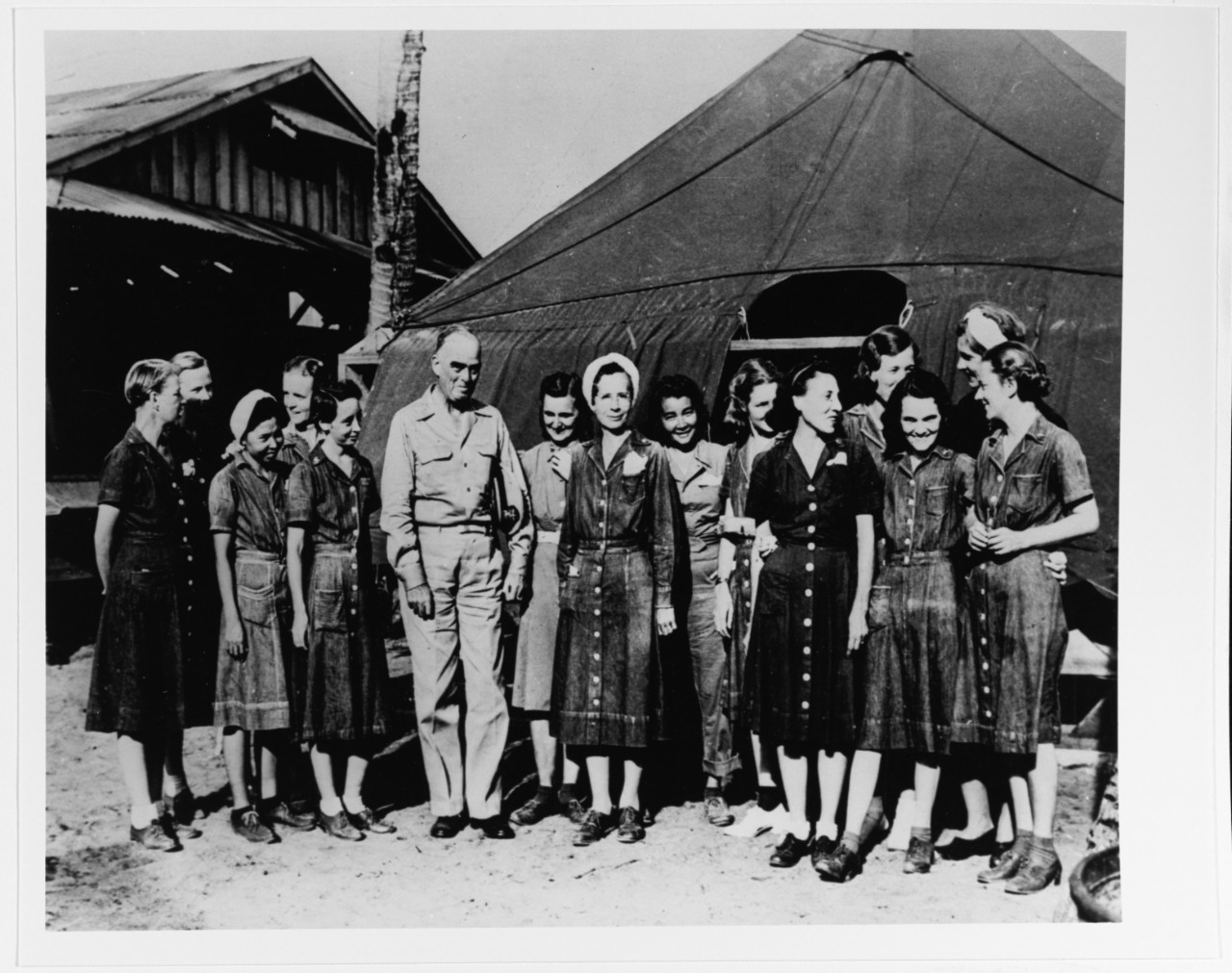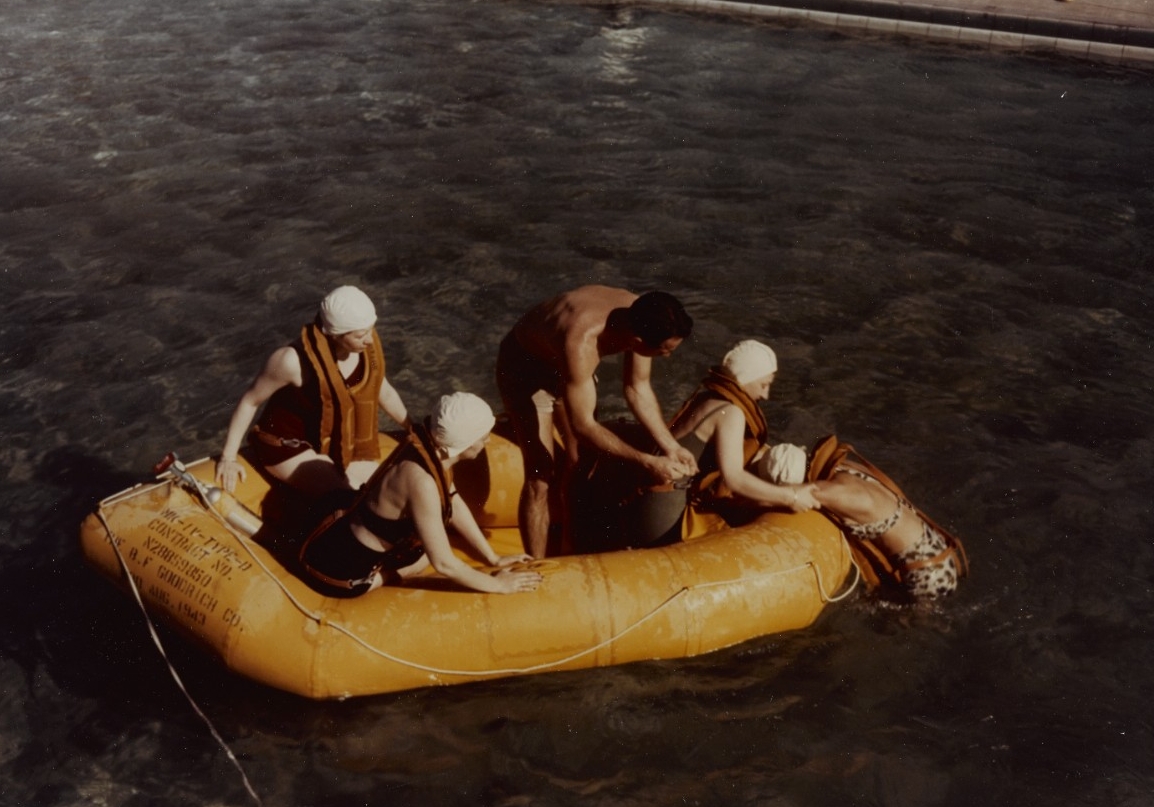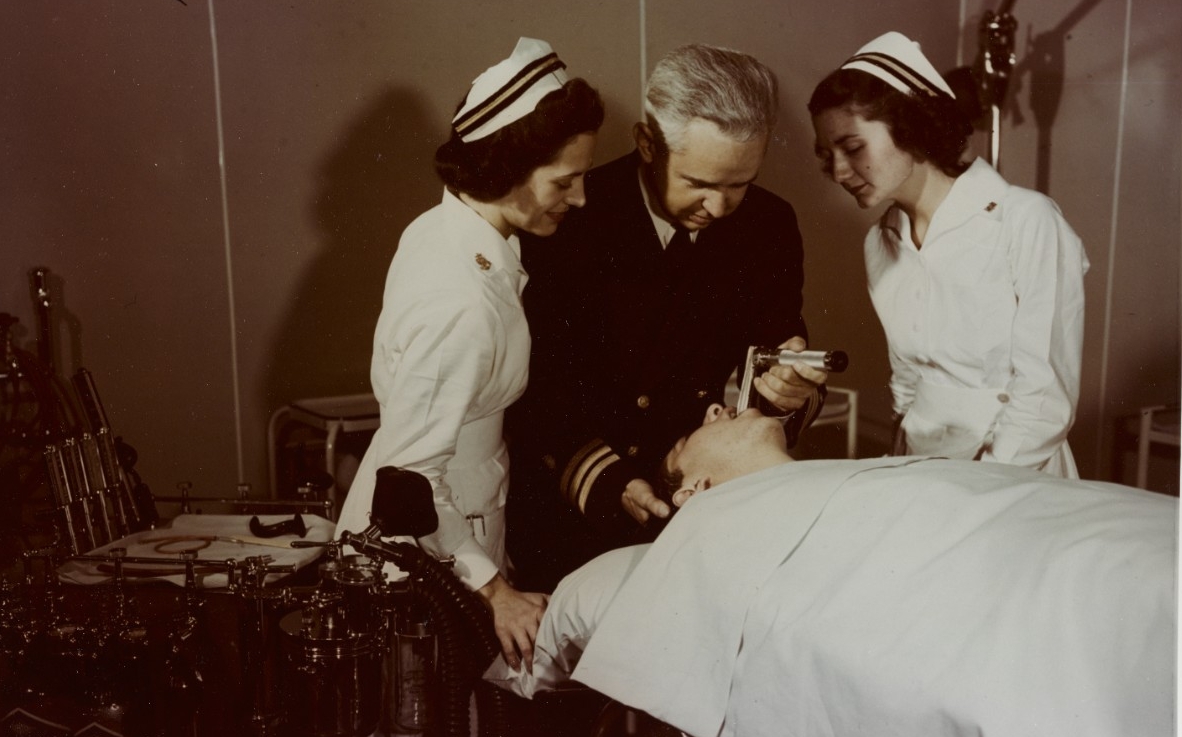Navy Nurse Corps
Congress established the Navy Nurse Corps (Female) on 13 May 1908. This new group of trained women met the need for a permanent female nurse corps in the Navy and put the service on equal footing with the Army and the civilian medical community.
In November 1908, The Bureau of Medicine and Surgery selected its first crop of 20 nurses, which were dubbed “the Sacred Twenty.” Standards for Navy nurses were high. To be accepted into the Navy Nurse Corps, applicants had to pass a rigorous application and indoctrination program. Applicants had to be graduates of a general hospital training school with at least a two year program and have clinical experience in a hospital. All nurses were subject to an examination of their professional, moral, mental, and physical fitness.
Upon selection, nurses completed three months of orientation and training in naval medicine at the Naval Medical School Hospital in Washington, DC, before being assigned to naval hospitals in Washington, DC; Norfolk, Virginia; Annapolis, Maryland; and Brooklyn, New York.
Since its inception in 1908, the Navy Nurse Corps has grown to include more than 4,000 active duty and Reserve nurses, both male and female. Navy nurses are stationed around the world at military treatment facilities, medical education institutions, clinics, hospitals, and research units. They serve on combatant ships and deploy in support of combat operations, disaster relief, and humanitarian assistance missions. Nurses work in more than 20 different specialties to provide health care to Navy and Marine Corps personnel and their families.
For more information, read The History of the Navy Nurse Corps, a historical essay by Wendy Arevalo, NHHC Communication and Outreach Division.
Notable Nurses
- Esther Voorhees Hasson
- Lenah Sutcliffe Higbee (the first woman to receive the Navy Cross non-posthumously)
- Lieutenant Commander Josephine Beatrice Bowman
- Captain Sue Dauser
- Rear Admiral Mary A. F. Hall, NC, USN
Documentary Histories
Oral Histories
- “A Winding Sheet and a Metal Box”: Recollections of WWI-era U.S. Navy nurse Josie Mabel Brown
- Lieutenant Ruth Erickson, NC, USN relates her experiences during Pearl Harbor Attack, 7 December 1941
- Captain Ann Bernatitus, NC, USN, (Ret.), recounts her service in the Philippines including Bataan, evacuation from Corregidor on USS Spearfish (SS-190); and service on USS Relief (AH-1) during the Okinawa campaign and the return of American prisoners of war from Japanese-occupied China.
- Lieutenant Dorothy Still Danner, NC, USN relates her experiences as a prisoner of war at Santo Thomas and Los Banos camps in the Philippines.
- Lieutenant Helen Pavlovsky, USNR, and Lieutenant Sara Marcum, USNR relate their experiences at Navy Base Hospital No. 12 after the Normandy Invasion
Artifacts
Infographics
Additional Reading
Navy Flight Nurse Jane “Candy” Kendeigh on the wing of a Naval Air Transport Service evacuation aircraft on Okinawa, April 1945. Plane appears to be an R5D. According to original caption, she was the first flight nurse to land on both Iwo Jima and Okinawa (National Archives [NARA], NHHC 80-G-K-5277).
Purple Heart awards are presented to staff nurses attached to U.S. Navy Headquarters Support Activity Hospital, Saigon, South Vietnam. Four nurses were injured in the bombing of the Brink bachelor officers' quarters at on Christmas Eve, 1964. Among those to receive their awards during this ceremony were: left to right: Lieutenant Barbara Wooster, Lieutenant Ruth Mason, and Lieutenant (j.g.) Ann Reynolds (NHHC, NH-93962).
Drawing, Charcoal on Paper; by Carlos Anderson, c. 1943. As this Navy patient's temperature rises to between 105 and 106.5 degrees, the nurse wipes the perspiration from his reddening face, while a fan cools his head. This treatment is used for venereal and certain other diseases. A hospital corpsman takes measures to replace the salt and water lost by perspiration during the treatment (NHHC, 88-159-K).
Navy nurses at Los Baños Internment Camp, Philippines (shown here with Vice Admiral Thomas C. Kinkaid) are among the women liberated on 23 February 1945 after three years of confinement. Left to right: Susie Pitcher, Dorothy Still, Basilia Stewart, Goldie O’Haver, Eldene Paige, Vice Admiral Kinkaid, Mary Chapman, Laura M. Cobb, Maureen Davis, Mary Nelson, Helen Gorzelanski, Bertha Evans, Margaret Nash, Helen Grant, and Edwina Todd. Note: Not all of these women were Navy nurses, some were naval officers’ wives working at the camp and others were members of Allied forces (NHHC, NH-94947).
Navy flight nurses practice how to get an unconscious person into a life raft, at Naval Air Station (NAS) Alameda, California, c. 1944–45. They are being trained in aircraft ditching procedures by Lieutenant H.M. Pickett. Nurses are (left to right): Ensign Patty Freeburger, Ensign Betty Markell, Ensign Norma Harrison, and Lieutenant (j.g.) Stella Makar (victim) (NARA, NHHC 80-G-K-2820).

